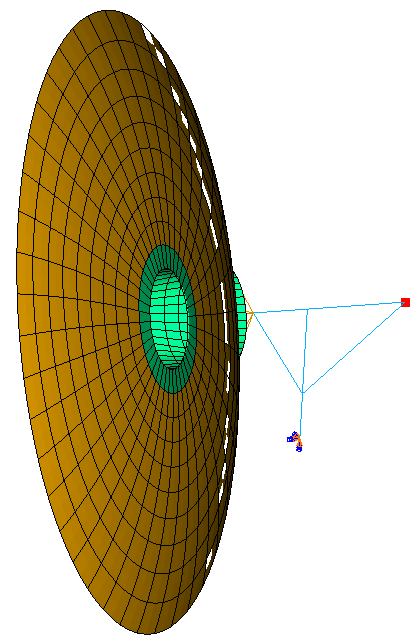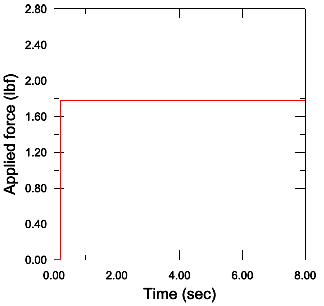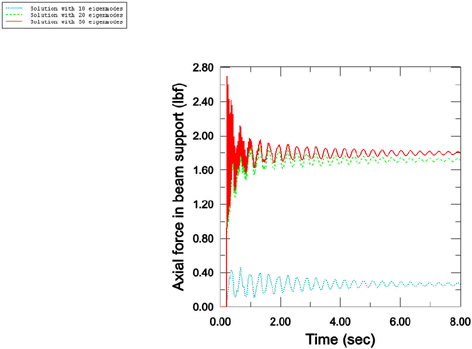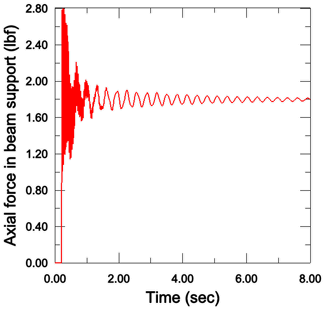Since the magnitude of the applied load is 1.78 lbf, the static solution for the total axial force in the main support beam is also 1.78 lbf. When the modal dynamic analysis is performed, modal truncation inaccuracies become evident. Figure 3 shows the force results using 10, 20, and 50 eigenmodes. For the 10-eigenmode case, the peak force in the support beam is only 0.4 lbf. If 20 eigenmodes are included, the peak force jumps to 1.7 lbf. If 50 eigenmodes are used, the peak force is 2.5 lbf and the correct static response of 1.78 lbf is recovered.
The answers vary because of modal truncation. The excitation history is a step function and, thus, includes the full span of frequency content. Similarly, since the excitation is applied at a single point, it can be accurately represented in the modal analysis only by using a large span of eigenmodes. Since a very large number of eigenmodes are potentially excited due to the temporal and spatial characteristics of the excitation, it is necessary to extract and use many eigenmodes. It is possible to determine how many eigenmodes are needed by looking at the total effective mass of the extracted modes or by performing a convergence study by systematically increasing the number of eigenmodes used in the modal dynamics analysis, similar to the study conducted above.
A much less time-consuming approach (in terms of human intervention and analysis cost) for achieving more accurate results is to use the residual modes capability. Due to the nature of the loading in this analysis, the residual mode capability is particularly useful in capturing the mode shape that dominates the static response. Figure 4 shows that a single residual mode combined with only 10 eigenmodes yields the correct solution. The residual modes approach (with a total of only 11 modes) produces essentially the same accuracy as using 50 pure eigenmodes.



